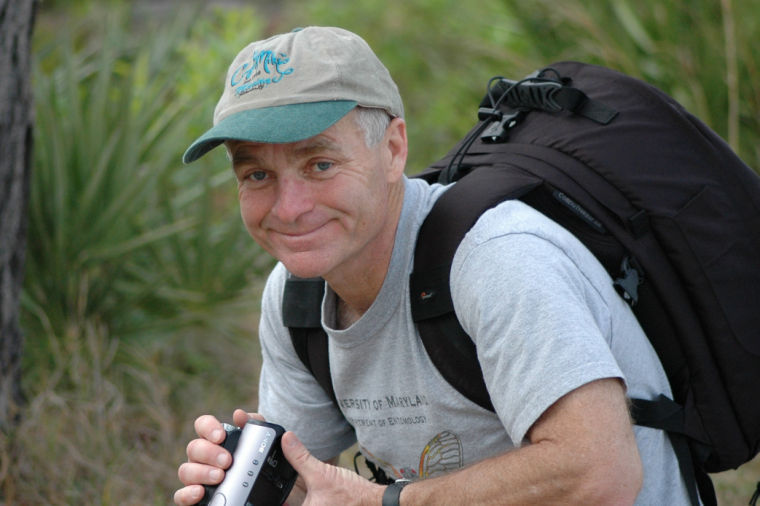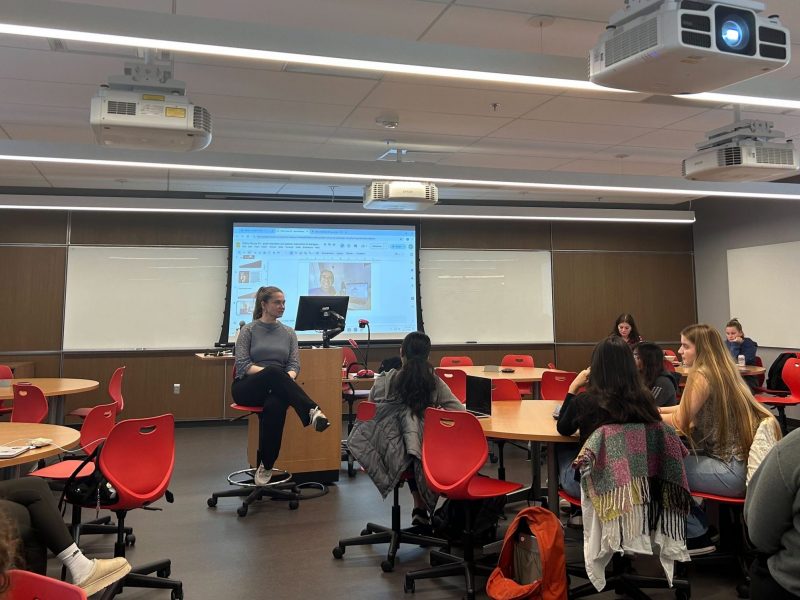
Photo courtesy of Mike Raupp
Today, he’s a well-known scientist, published author, media personality and one of the nation’s leading cicada experts.
But decades ago, university entomologist Mike Raupp — also known as “The Bug Guy” — was just a young boy enthralled by the natural world.
Raupp and his siblings scavenged the fields and forests near their rural New Jersey home for wild animals to study. Sometimes they even domesticated animals, as per their mother’s rule: If they could catch it, they could keep it.
“As kids, we had raccoons, we had opossums, we had a hawk, we had an owl as pets in our house,” he said.
Raupp, 60, said his childhood was just the start of a decades-long career in science and an unparalleled expertise in cicada biology that’s earned him national attention, especially as a new generation of the bugs begins to emerge for mating season.
The fast-approaching flying bugs live in several generational broods, each ascending from the ground every 17 years to mate, die and leave newborn nymphs to repeat the process. During the last cicada mating season in 2004, Raupp became a familiar source for information on the bugs; he did a number of news interviews and formed the “Cicadamaniacs” with a group of his graduate students to run outreach programs and educate the local community on cicada history and biology.
Over the course of his career, Raupp estimates he has appeared on ABC’s Good Morning America about 15 times. He’s talked bugs with Dr. Oz and Tyra Banks, spoken to audiences on Animal Planet and Discovery News and written for a number of academic journals. He’s been a consultant for the writers of Fox’s TV comedy-drama Bones and maintains a website called Bug of the Week to get young people engaged in natural history.
With the expected arrival of the Brood II cicadas next month, the testimonial spotlight is shining on Raupp again, now in his 36th year at the university. He’s been called on for radio, network and print appearances around the country to shed some light on the famous skin-shedding bugs.
“We’ve had the big push — we’ve done a few spots already,” Raupp said. “It’s really gonna go nuts here around the middle of May, when the adults start to come up in big numbers. That’s when there’ll be another big media push, I think, to see these guys.”
Raupp said he appreciates the demand because it reflects a deeper societal enthusiasm for environmental issues he thinks have been too often neglected.
“It’s almost like a rebirth or a reenergizing of this environmental movement. I think you guys are a lot more interested in the environment than maybe your peers were 10 years ago, and I find this very exciting,” he said.
Raupp studies all sorts of insects, but he said cicadas — and their exciting romances — are especially fascinating to him.
“There’s sex first; that’s the great part. They come up — they’ve been sucking on plant sap for 17 years underground; it’s dismal,” he said. “They’re gonna emerge in May; they’re gonna shed their skins; they’re gonna climb up to the treetops. It’s gonna be a big-boy band; only the males sing — they attract the females.”
The cicadas, he joked, aren’t altogether different from 17-year-old humans.
“They’re just teenagers,” he said. “No wonder they want to get up, rock out, have sex.”
Last weekend, Raupp dug up what he said was the first cicada of the new brood in the country, and he now keeps the living insect buried in a plastic container on his desk.
“It’s even before CNN,” he said, sitting in his office in the Plant Science Building. “You’re looking at the first Brood II cicada.”
The cicadas, he said regretfully, will not be mating directly on campus grounds, but rather in surrounding counties.
Even when it isn’t cicada season, Raupp keeps busy. He chaired the entomology department from 1993 to 2000, a time during which he staved off financial crisis and structurally stabilized the department, current department chair Charles Mitter said
Generally, Raupp focuses on the impact of urbanization on insect populations and examines the effects of pesticides and invasive species. He works toward greater sustainability, Mitter said.
“He’s the world leader in that field,” Mitter said. “Mike’s a superb colleague. He was a very effective chair of the department for seven years, and all of us hold him in the highest possible regard.”
Student reviews of Raupp on OurUMD paint a similar picture.
“Some teachers that have tenure or have gotten old at Maryland have become decadent and unresponsive, but Raupp definitely cares about his students,” one wrote, saying he or she didn’t find his CORE course to be challenging.
Raupp also wrote 26 Things That Bug Me, a children’s book, in 2010, “under the guise of teaching them the alphabet,” he said, but designed to engender children to insects.
“People are looking around for bug geeks who are goofy or something, and they find me. The next thing you know, you’re answering questions,” he said.
Yet for Raupp, all his research, writing and appearances trace back to the start. His professional experiences, he said, were born out of an upbringing that immersed him in the natural environment and cultivated his desire to study it.
“That’s the place that I was never bored. There was always an adventure. Every time I went out, there was some new animal, some new plant, some new rock, some new cave, some new river to swim in or mountain to climb up,” he said. “Just being out in nature was part of a lifelong ‘a-ha’ moment.”
Even now, decades into his scientific career, with a 65-page resume , a wife and three grown children, all campus graduates, Raupp said he finds himself taken aback by natural discovery.
“There’s never a time that I don’t go out into a forest or a rain forest or a desert that I don’t see something I’ve never seen before and say, ‘Oh, my god. This is so cool,’” he said.



